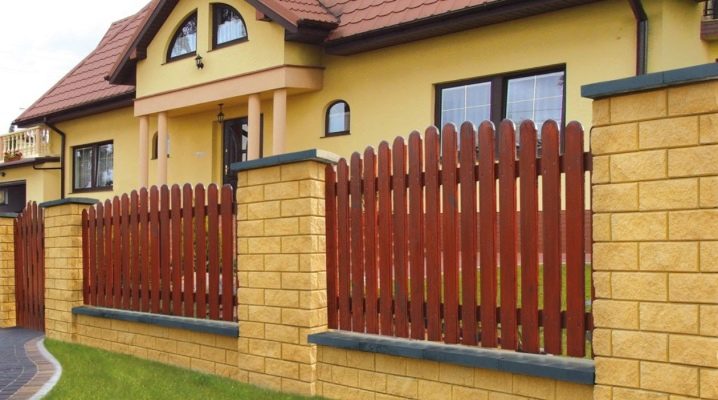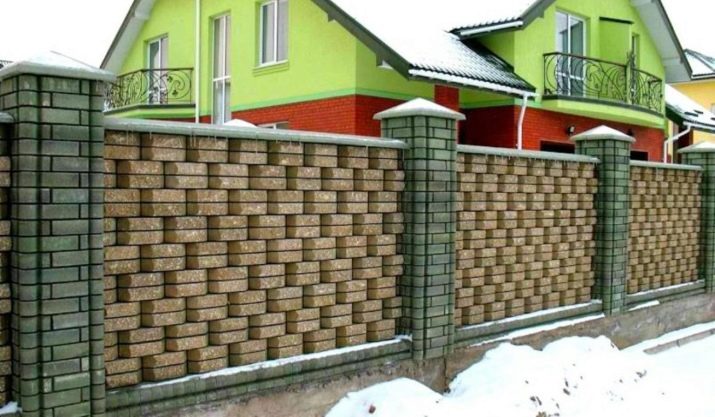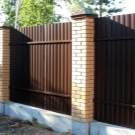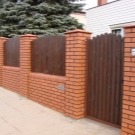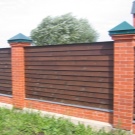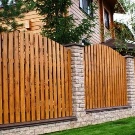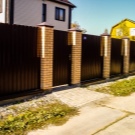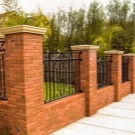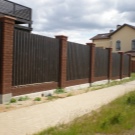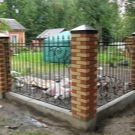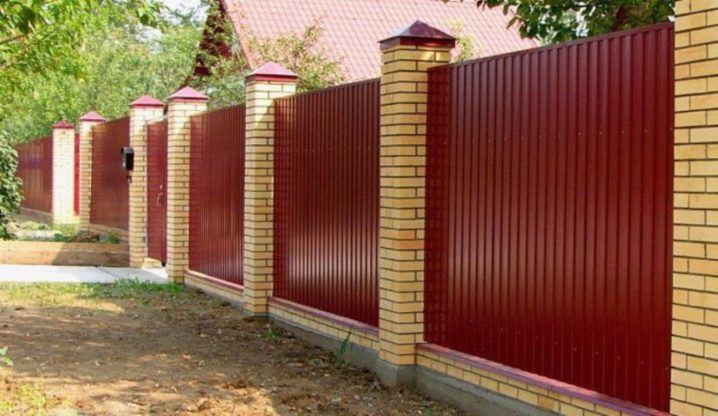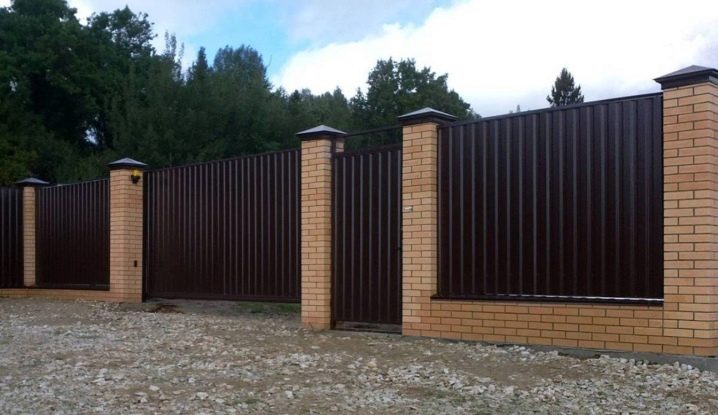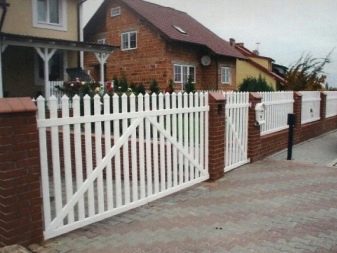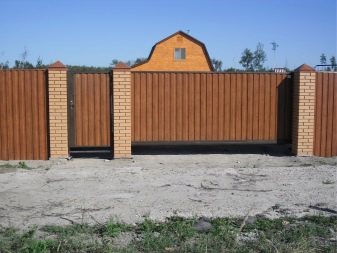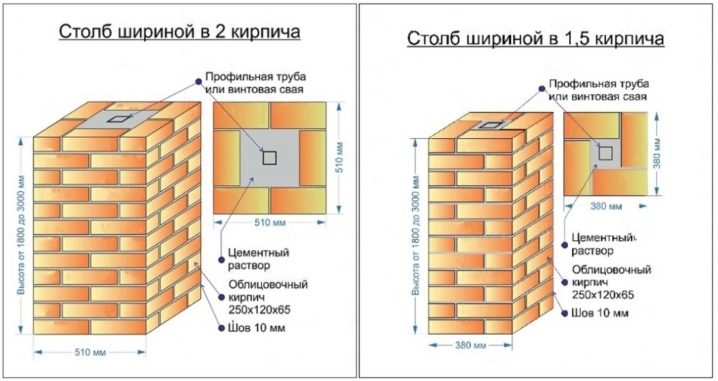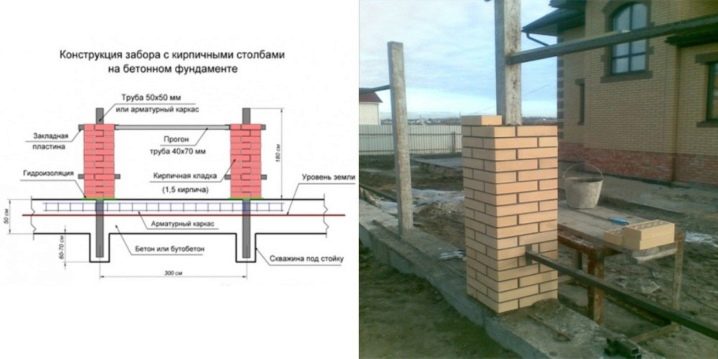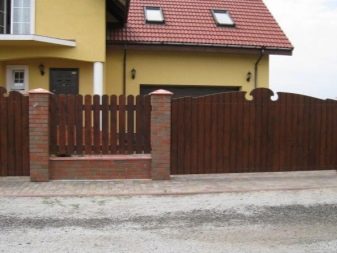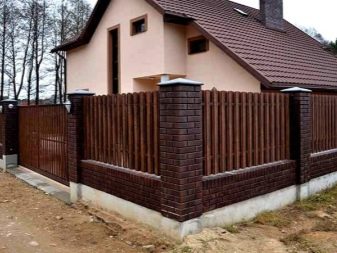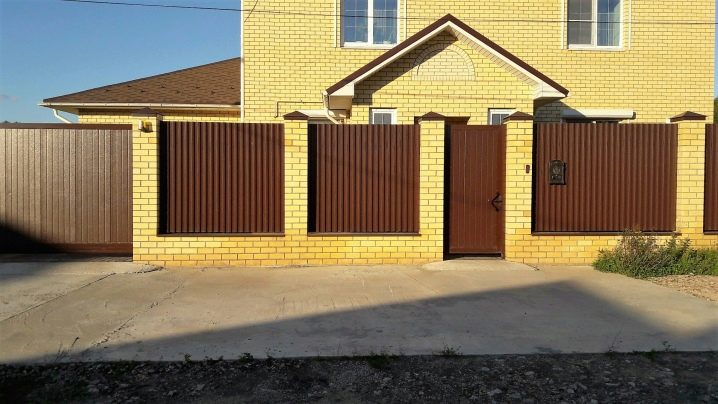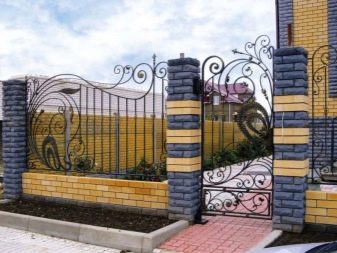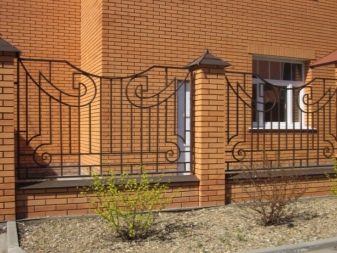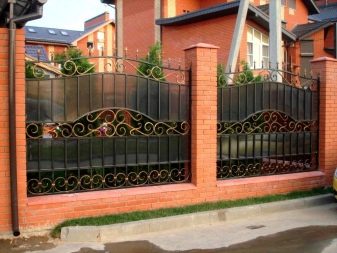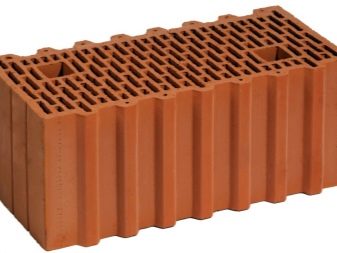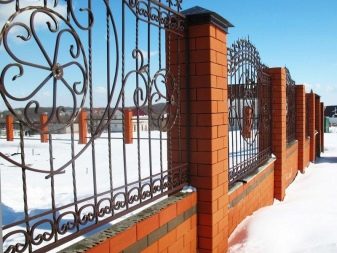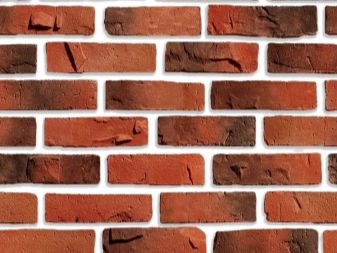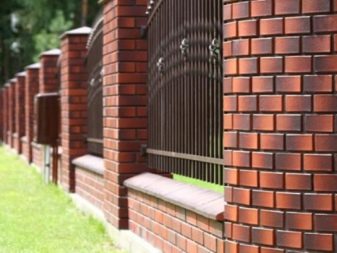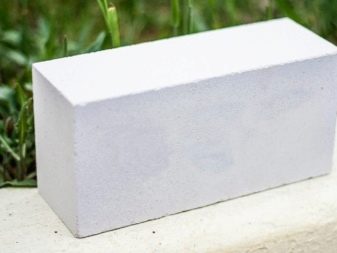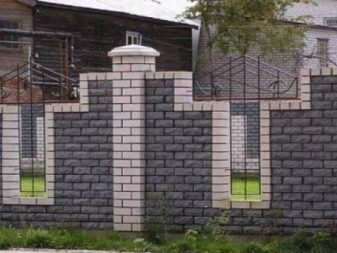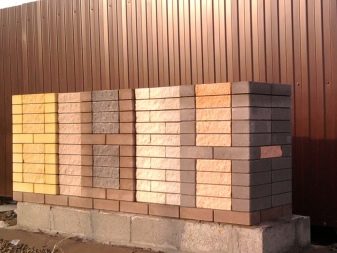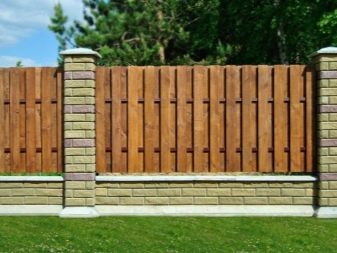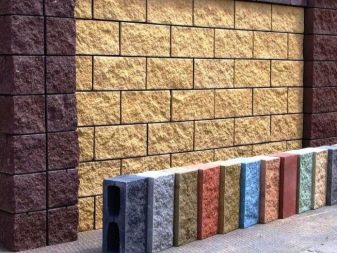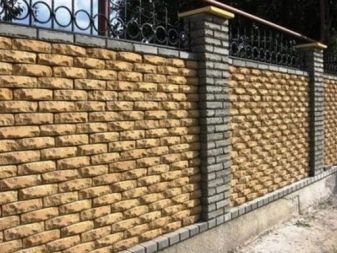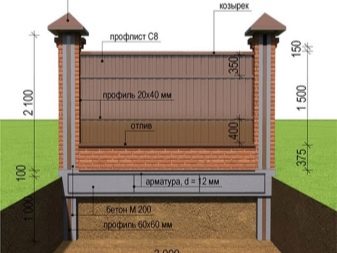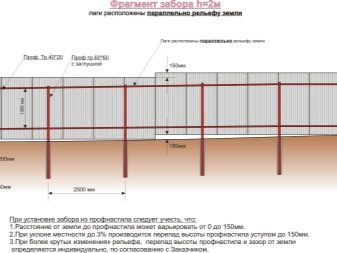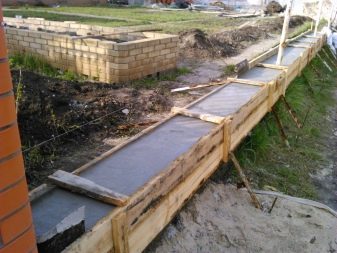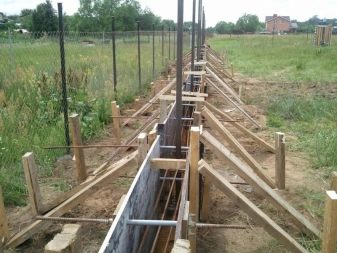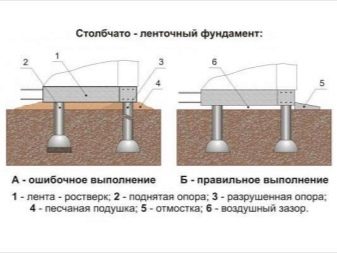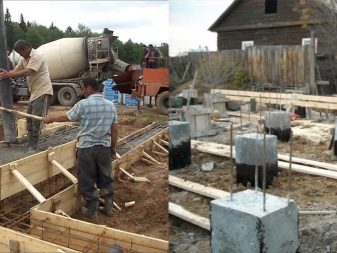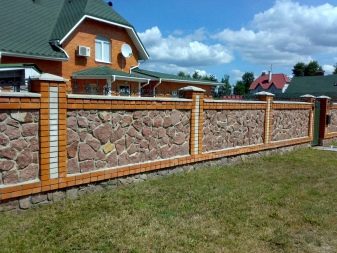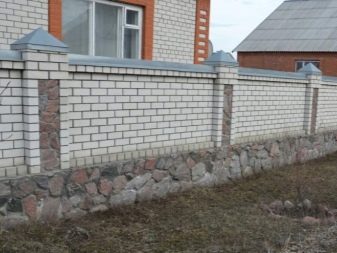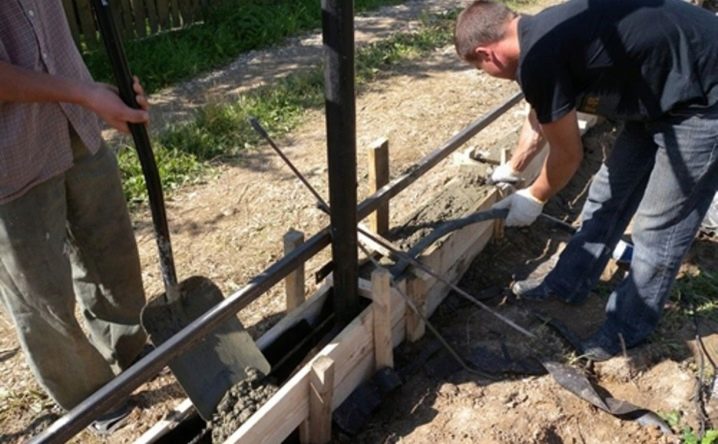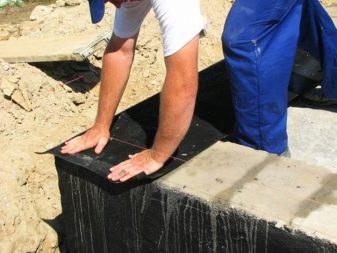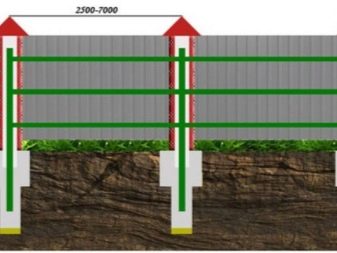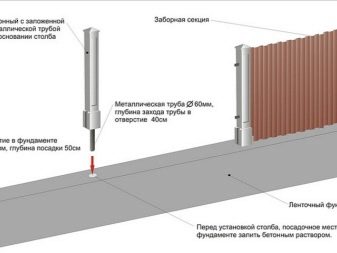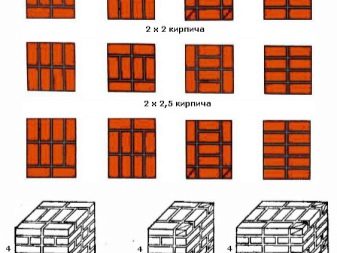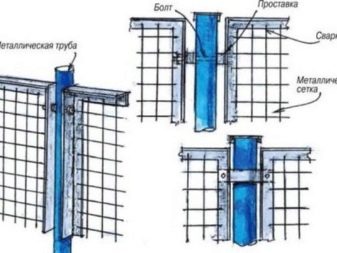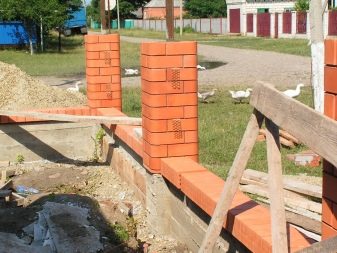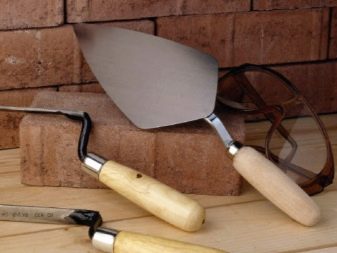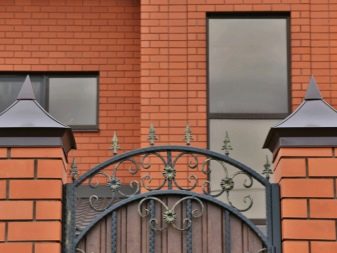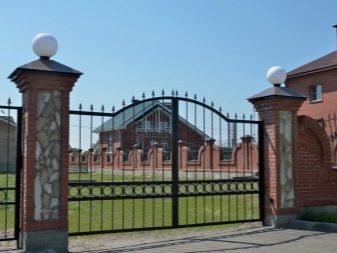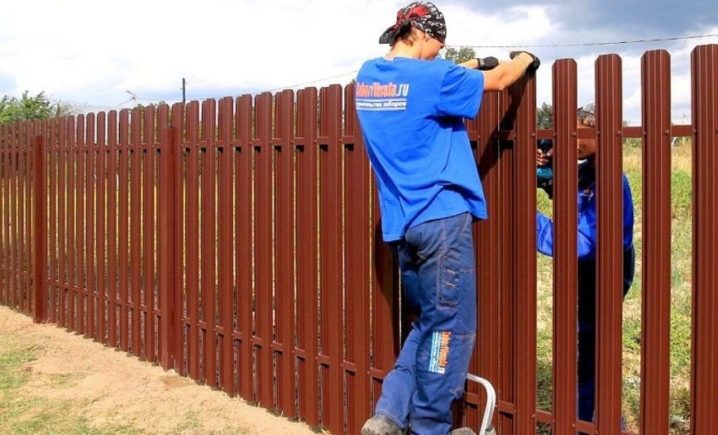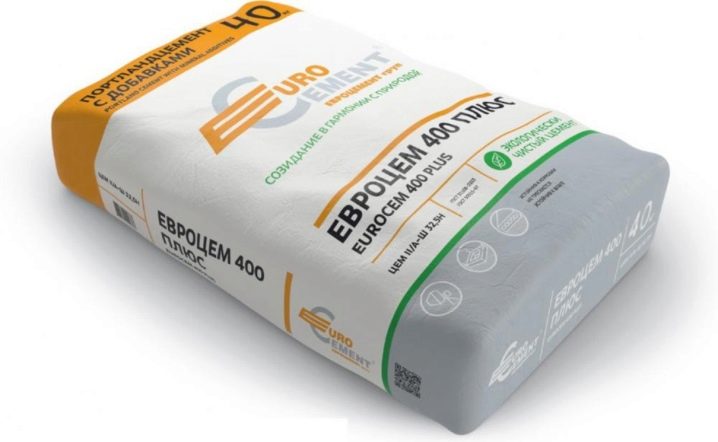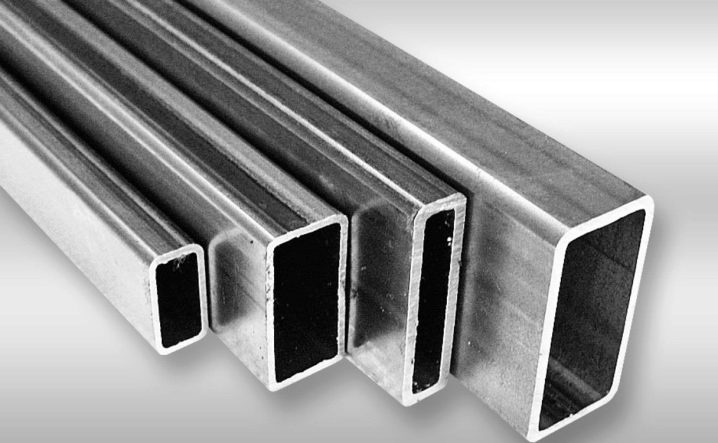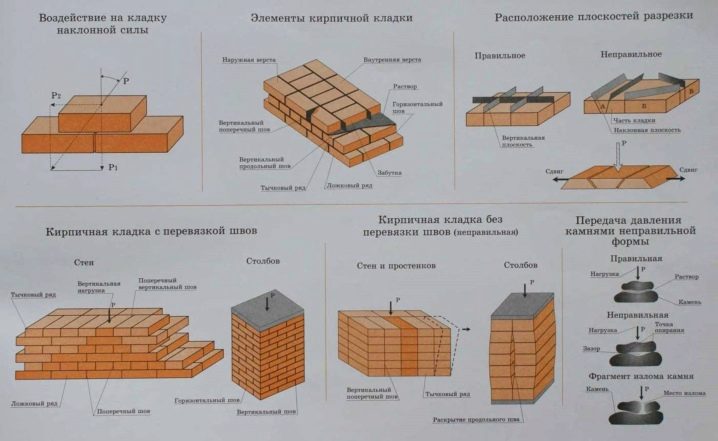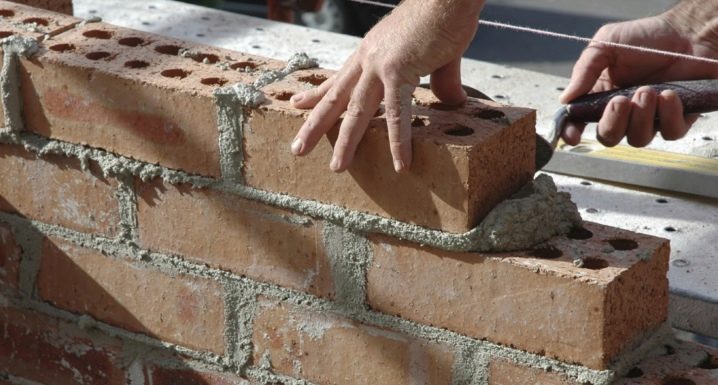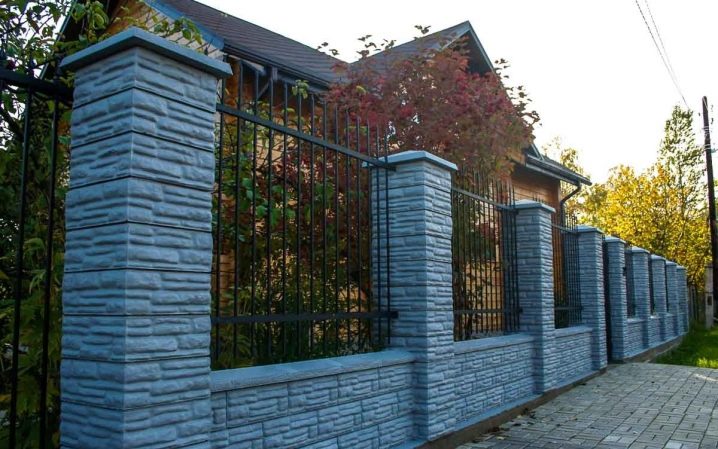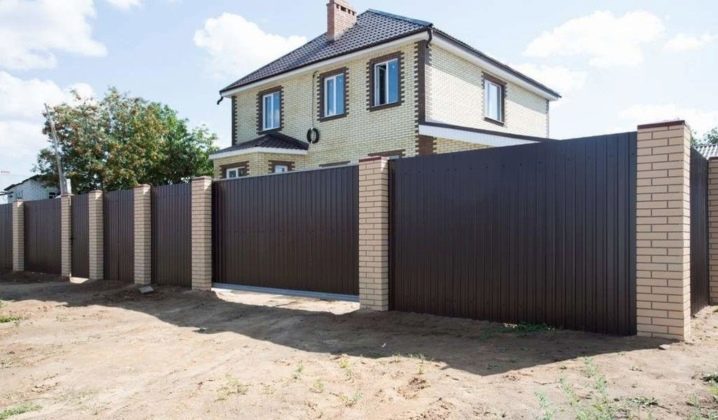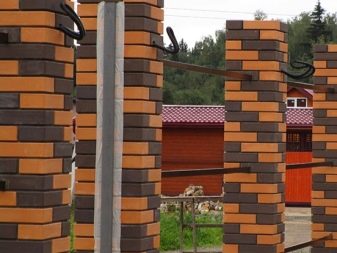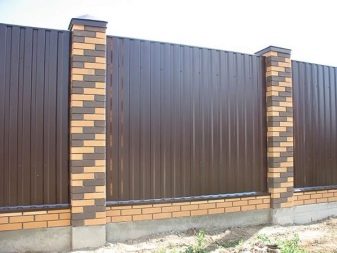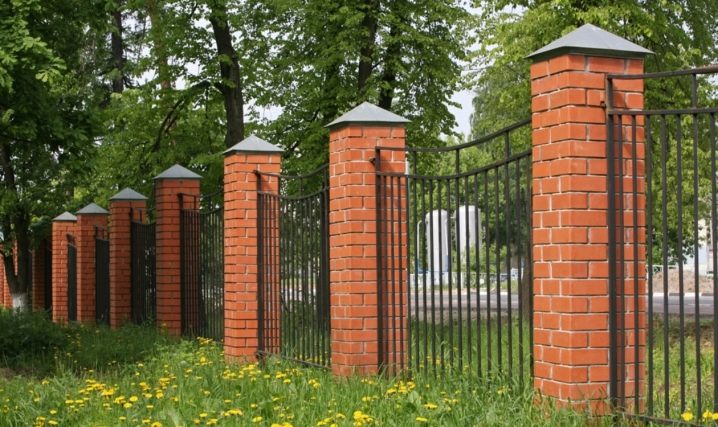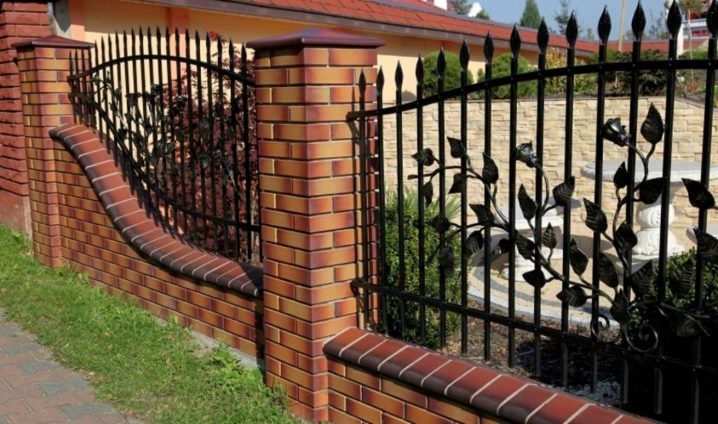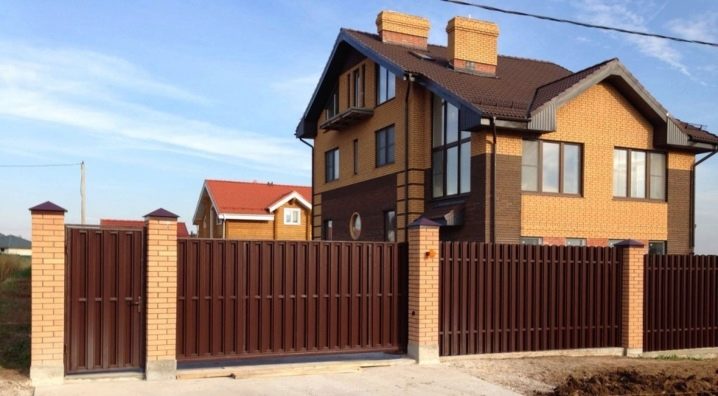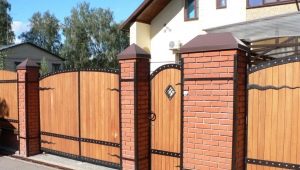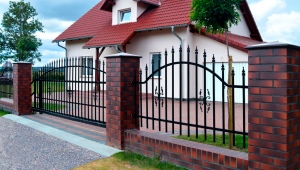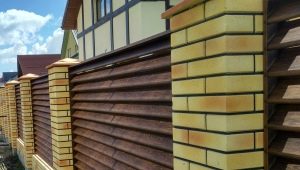Brick pillars: selection criteria
Fences with brick pillars are a good solution for any suburban area. They are durable, durable and look impressive. In order to maximally effectively equip the space in front of a country house, it is necessary to consider the main types of such fences, their selection criteria, design and installation features.
Fencing features
Such fences are usually installed on a strip foundation, the supports are placed at the same distance from each other, usually about two meters. The choice of the interval depends on the type of material of fence slabs, the size of the site, the project of the fence itself. The gate is usually also mounted between such neat brick columns. The masonry is chosen about the same as in the construction of other buildings and structures, but there are some subtleties in the construction of supports.
Country fences with brick pillars will have several advantages:
- durability and reliable protection against intrusion;
- resistance to temperature extremes, precipitation, other adverse weather factors;
- long-term service life - well-established fences of high-quality building materials can serve for several decades;
- if there are gates for a car in the fence - any: hinged, sliding, electrically operated, then brick pillars are the strongest basis for them;
- the possibility of replacing intake ceilings, while the supports themselves remain at the same place.
Such fences are distinguished by a variety of forms and materials, between the pillars you can strengthen forged or welded iron, colored sheets, wood, plastic. It is possible to design a truly original design that will stand out from the neighboring areas.
Brick pillars are much more resistant to destruction from moisture and frost than concrete. In this case, fences with brick pillars will cost less than a solid brick wall, and the image of the site will be more elegant and light.
Kinds
Constructions
The most common pillar designs for similar fences with a width of 2 or 1.5bricks. The layouts are very simple, a screw pile or a profile rectangular pipe is installed inside. Elegant columns with a width of 1.5 bricks can be a reliable support for any kind of coating, but it is good to use them for the wicket.
Dimensions
The dimensions of the two types are slightly different: for pillars of 2 bricks, the height can be from 1.8 to 3 m, width is 510 mm. At the supports of 1.5 bricks, the dimensions of the square section are 380 mm, and the height can be the same. Sometimes you need to make a higher fence, then the laying of the pillars can be more than 2 bricks, and a width of more than 510 mm. Ceilings made of sheet or wood for such supports are chosen a little bit lower, by a few centimeters.
The dimensions of the spans of fences with brick pillars can vary from 2 to 5 m. The criteria here are the terrain, the height and width of the intake ceilings - It is important that the distance between the supports allows you to withstand the load and gusts of wind.
By type of flooring materials such fences can be the following:
- Wood - the most classic version, they look very nice, in harmony with nature, are easy to install and do not require special care.
As a tree, you can choose different types, but it is best to use double-sided thick picket fence.
- From the profile sheet - very widely used recently due to reliability, low cost and ease of installation. The coating of galvanized iron can be polymeric or powder, a wide variety of colors - this is the main advantage of such a material.
- Forged or welded iron - look very impressive, adding lightness and airiness in the landscape. They are quite strong, not amenable to hacking. Art forging can be a real masterpiece of garden and garden art.
In addition, you can use the combined fence overlap. Below on the foundation several layers of the same brick are laid, from which the columns are made, and the profile sheet or tree is already mounted up. Such fences look very beautiful due to the smooth transition of the brickwork from the pillars to the base. In addition, the combined floors provide more reliable protection against illegal entry.
How to choose a brick?
For a beautiful and durable fence, you can choose several types of bricks. Naturally for neat masonry it is necessary to acquire a facing look, not a roughing, used for interior work:
- Ceramic brick It is made of red clay, therefore it usually has a corresponding color. Less common products are gray or sand color. It is produced by the method of plastic molding, followed by roasting or semi-dry pressing. Ceramic brick has high strength and resistance to mechanical damage, low moisture absorption, it is an environmentally friendly material.
- Clinker brick It is made from refractory clay and has the highest strength of all kinds. Its colors are about the same as those of ceramic bricks, many recommend it as the best when building fences.
- Silicate brick made from lime and quartz sand with mineral additives by steam treatment at high temperatures. The color is usually white. Due to heat treatment, it is very waterproof, durable and resistant to severe frosts. In addition, the mineral materials used for the production of silicate bricks are environmentally friendly.
- Hyper pressed bricks They are made by pressing bulk mineral materials under very high pressure, so that they bind at the level of molecules.They are durable, lightweight, resistant to frost, have low water absorption. Thanks to the production technology, these bricks have a very smooth surface, so they look beautiful and require less mortar to bind the masonry. They consist of cement, marble, limestone, crushed stone, coloring pigments. The colors can be varied - from light gray to dark brown.
- Torn brick It has a rough, rough surface on its face, resembling a natural decorative stone. Create pillars for the fence of such material will be very impressive. Ragged bricks are usually full-bodied, often silicate, the materials used are the most diverse: clay, cement, sand, marble or granite chips. Decorative species have many different shades for every taste.
Design
Designing a fence with brick pillars is best to start with an assessment of the terrain. It is necessary to take into account many factors: the free area between the house and the fence, the location of the future gate, car gates and access roads to them, the surrounding relief and the type of soil, the fence of neighbors and other important points.On the basis of all this, a future fence project is being made.
It is desirable to immediately draw up on paper a plan with the size and location of pillars, ceilings, wickets, gates, foundations and possible communications. It is best to have two schemes for clarity: a profile and a side view.
Next is to choose the foundation for the future fencing. Its presence is very important for any type of soil and material, only the concrete base ensures that the fence will stand smoothly and not warp for many years. You can choose several options for the foundation:
- Strip foundation for brick fence is the most common. When it is pouring the concrete mix is dug trench around the perimeter. The width must match or be slightly larger than the width of the brick pillars, the depth is chosen depending on the weight of the finished structure. After digging the trench, it is necessary to cover it with waterproofing, place the armature frame inside, then pour the solution of water, cement and sand.
For greater strength, fragments of bricks or cobblestones can be added to the liquid poured mixture.
- Pillar foundation it is applied in the presence of highly resistant soil.The mortar is poured only directly under the future brick pillars. Holes for them are made by a vertical drill of the required diameter to the depth of soil freezing. Next, install vertical metal rods, reinforce the pit with reinforcement and pour concrete.
- Combined version involves the filling of the column foundation directly under the brick pillars and the belt under the spans. The process will be more complicated, but this type of soil reinforcement is especially good if the fence spans are heavy, for example, from concrete slabs.
You can build a foundation for the fence of natural stone. It does not require a reinforcement cage bundle for pouring. Natural building material will look beautiful at the bottom of the dacha fence.
After pouring the foundation, it is necessary to wait for the concrete to get in contact with and for the concrete. Depending on the weather conditions and the type of cement, this takes from 4 to 10 days. After that, you can proceed directly to the installation of the fence.
Subtleties of installation
Between the concrete foundation and brickwork must be installed waterproofing. This is best done using ordinary ruberoid.Then around the perimeter is marked the location of the pillars, do not forget about the gate with the gate.
Profile pipes are installed on the strip foundation, brick laying is performed around them according to the chosen scheme.
Another important point - Do not forget to weld to the internal profile pipes of fastening for future spans. They should protrude 5–10 cm over the brick. The laying of the bases for the fence takes place in the usual way, as for the walls. The solution for it is best to choose medium plasticity, between each second layer is to place the reinforcing bars for rigidity.
For the installation of the supports of such a fence, the same tools are needed as for ordinary brickwork: a tank for mixing mortar, a shovel, a mixer, a trowel, a level of 0.5 - 1 m.
It is advisable to stretch the entire length of the horizontal beacon from the usual lace.
At the top of the pillars of brick, decorative caps are usually installed for beauty. Some people want to make beautiful lanterns on each support, then you have to stretch the electrical cables inside the frames in advance.
After the support for the fence, the wickets and the gates are installed, it is necessary to wait several days for the springs to be assembled before mounting the spans.After that, you can safely proceed to fixing sheets, metal grill or picket fence.
At installation of fences with brick columns it is worth knowing some other subtleties. For mortar, it is best to choose cement grade M-400, lime and sifted sand, gravel or crushed crushed stone.
To save, you can sift the sand on your own private plot.
It is better to reliably connect screw piles or profile pipes with strip foundations, having installed them in advance during pouring. If a profile is used for the frame, then a liquid solution is also poured into its voids for greater strength. The pipes themselves are taken with a section of 40x40 or 50x50 mm.
The thickness of the joints for masonry should be about 1 cm, after laying each 3 - 4 rows should check them by level. The use of bricks without cavities, for example, hyper pressed, can significantly save solution consumption.
The seams need to be embedded inside, they must be smooth and neat.
If it is planned to use only brick pillars for the installation of the fence, and not all the spans or their bases, then it is sufficient to make a columnar foundation for them.Immediately after mounting the supports, it is worthwhile to put plastic caps on them to protect them from precipitation, and to withstand the pillars closed for several days until they have begun to install spans.
In addition, there are special decorative facing materials "under the brick". They will not replace all the remarkable properties, but if they cover the gray and bare concrete pillars, the fence will noticeably change. They are mounted on the surface as a normal facing tile for outdoor work.
You can learn more about laying brick pillars by watching the following video.
Interesting examples
A fence with brick pillars and a base with spans from a profiled sheet looks very impressive, although this is practically the simplest possible option.
The fence with columns of red brick and spans of welded rods is durable and beautiful. It visually enlarges the space, does not block the excellent panorama from the outside.
Wrought iron as a spans and the base of the elegant facing bricks is simply impressive. Here the design and installation is more complicated.
Wooden decorative picket fence is also a good choice for material spans into a fence of brick columns.
